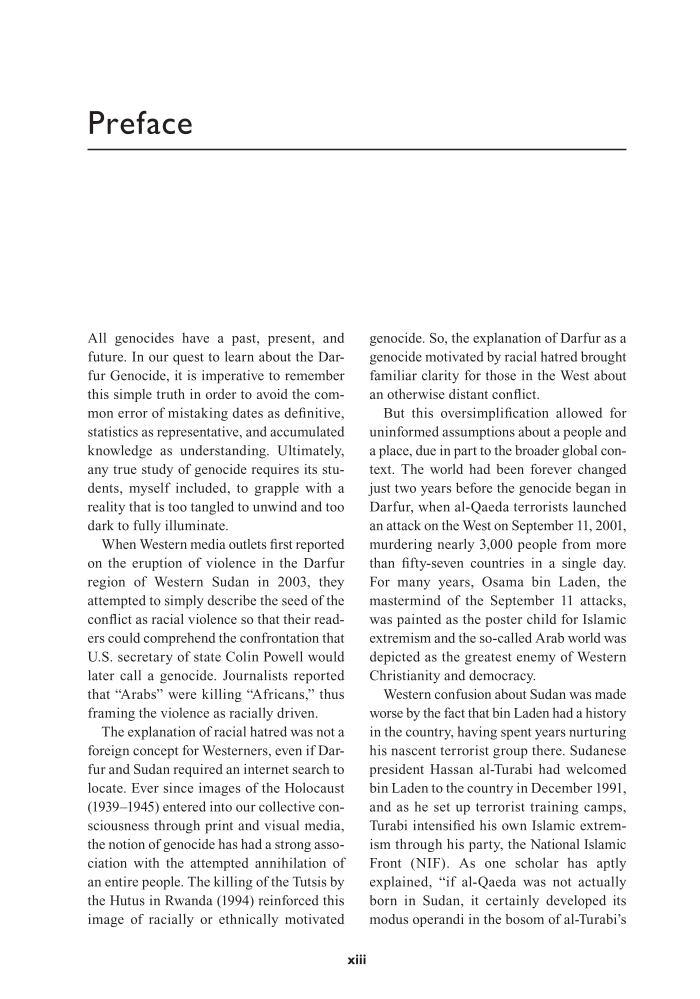xiii All genocides have a past, present, and future. In our quest to learn about the Dar- fur Genocide, it is imperative to remember this simple truth in order to avoid the com- mon error of mistaking dates as definitive, statistics as representative, and accumulated knowledge as understanding. Ultimately, any true study of genocide requires its stu- dents, myself included, to grapple with a reality that is too tangled to unwind and too dark to fully illuminate. When Western media outlets first reported on the eruption of violence in the Darfur region of Western Sudan in 2003, they attempted to simply describe the seed of the conflict as racial violence so that their read- ers could comprehend the confrontation that secretary of state Colin Powell would U.S. later call a genocide. Journalists reported that “Arabs” were killing “Africans,” thus framing the violence as racially driven. The explanation of racial hatred was not a foreign concept for Westerners, even if Dar- fur and Sudan required an internet search to locate. Ever since images of the Holocaust (1939–1945) entered into our collective con- sciousness through print and visual media, the notion of genocide has had a strong asso- ciation with the attempted annihilation of an entire people. The killing of the Tutsis by the Hutus in Rwanda (1994) reinforced this image of racially or ethnically motivated genocide. So, the explanation of Darfur as a genocide motivated by racial hatred brought familiar clarity for those in the West about an otherwise distant conflict. But this oversimplification allowed for uninformed assumptions about a people and a place, due in part to the broader global con- text. The world had been forever changed just two years before the genocide began in Darfur, when al-Qaeda terrorists launched an attack on the West on September 11, 2001, murdering nearly 3,000 people from more than fifty-seven countries in a single day. For many years, Osama bin Laden, the mastermind of the September 11 attacks, was painted as the poster child for Islamic extremism and the so-called Arab world was depicted as the greatest enemy of Western Christianity and democracy. Western confusion about Sudan was made worse by the fact that bin Laden had a history in the country, having spent years nurturing his nascent terrorist group there. Sudanese president Hassan al-Turabi had welcomed bin Laden to the country in December 1991, and as he set up terrorist training camps, Turabi intensified his own Islamic extrem- ism through his party, the National Islamic Front (NIF). As one scholar has aptly explained, “if al-Qaeda was not actually born in Sudan, it certainly developed its modus operandi in the bosom of al-Turabi’s Preface
Document Details My Account Print multiple pages
Print
You have printed 0 times in the last 24 hours.
Your print count will reset on at .
You may print 0 more time(s) before then.
You may print a maximum of 0 pages at a time.











































































































































































































































































































